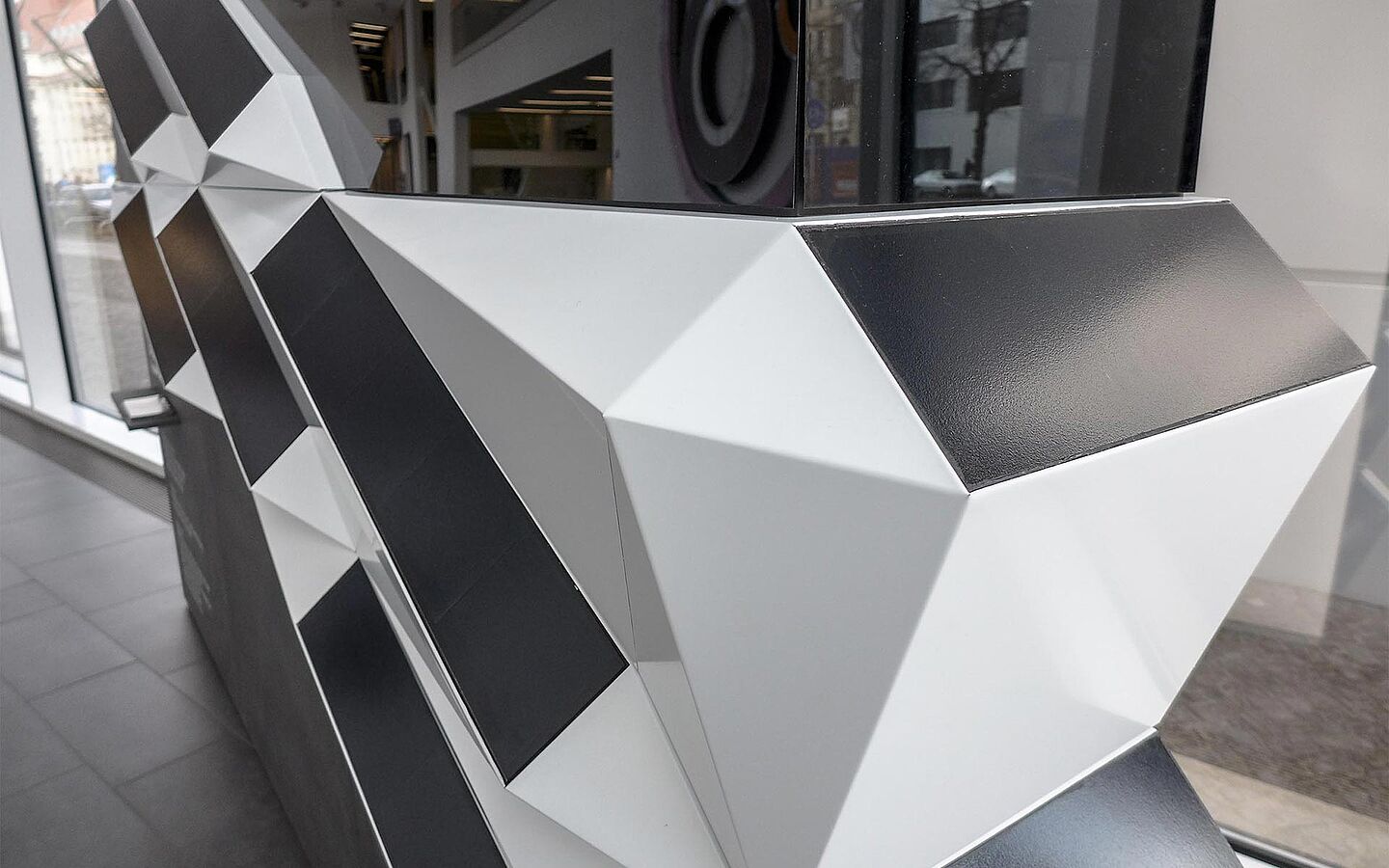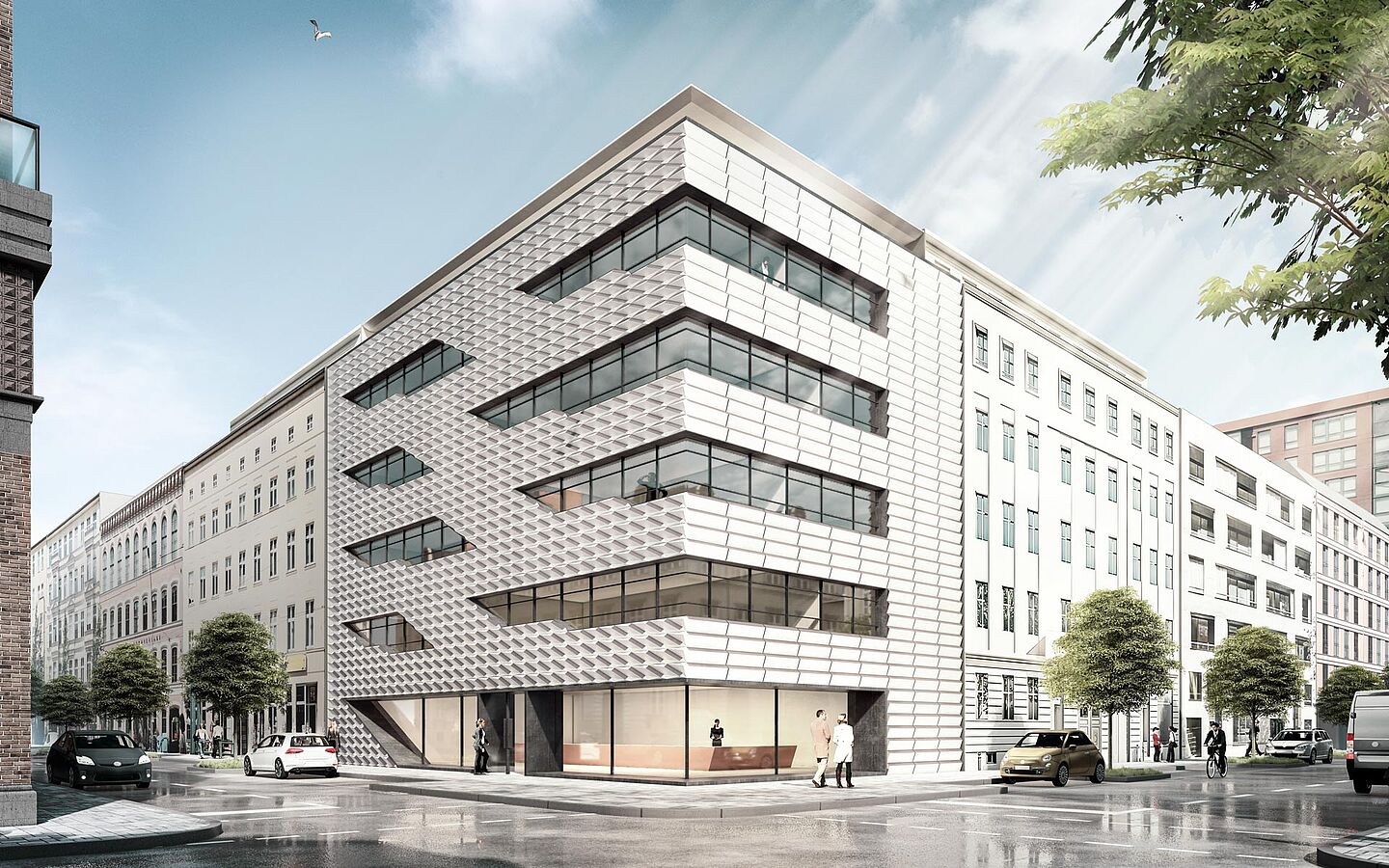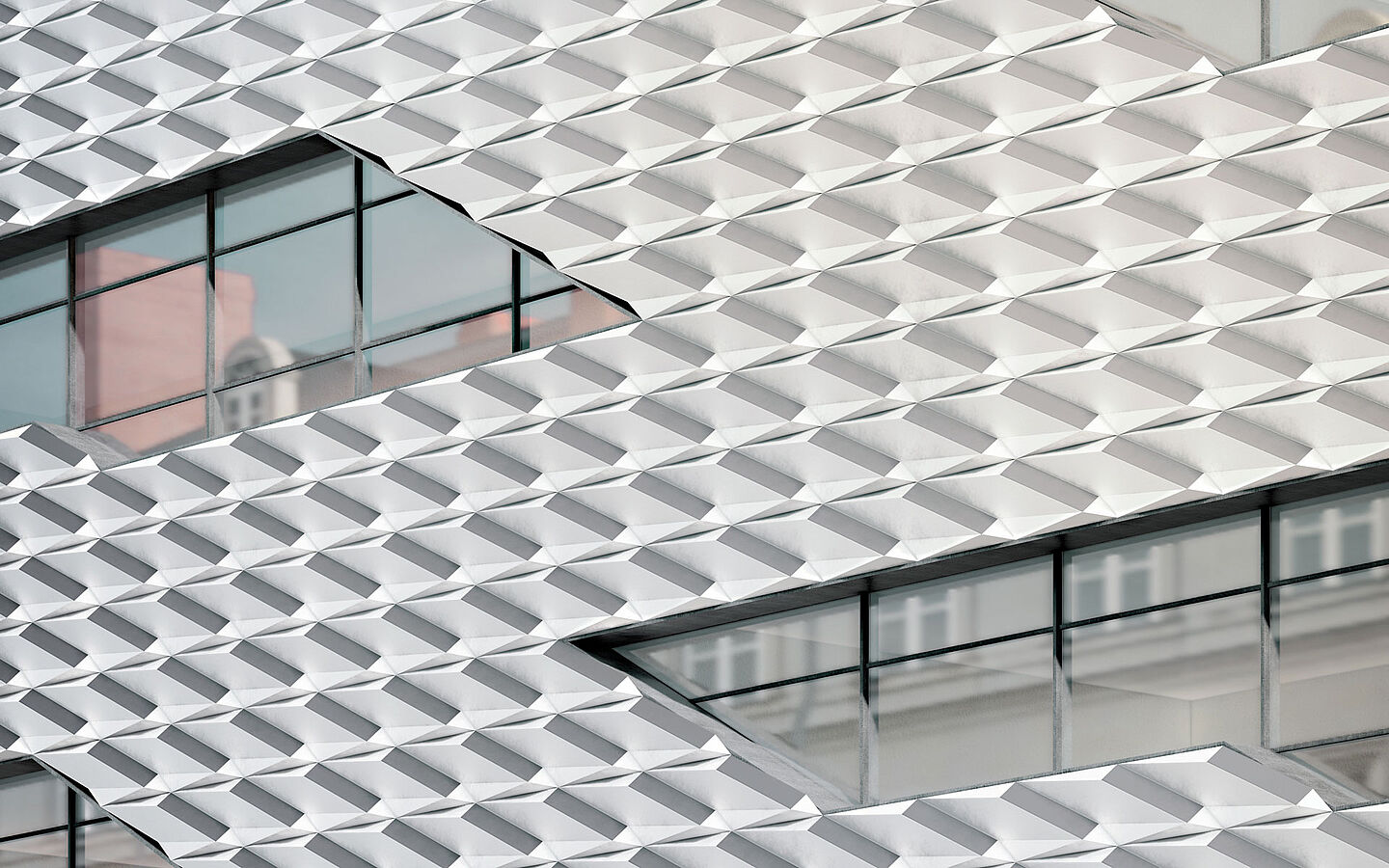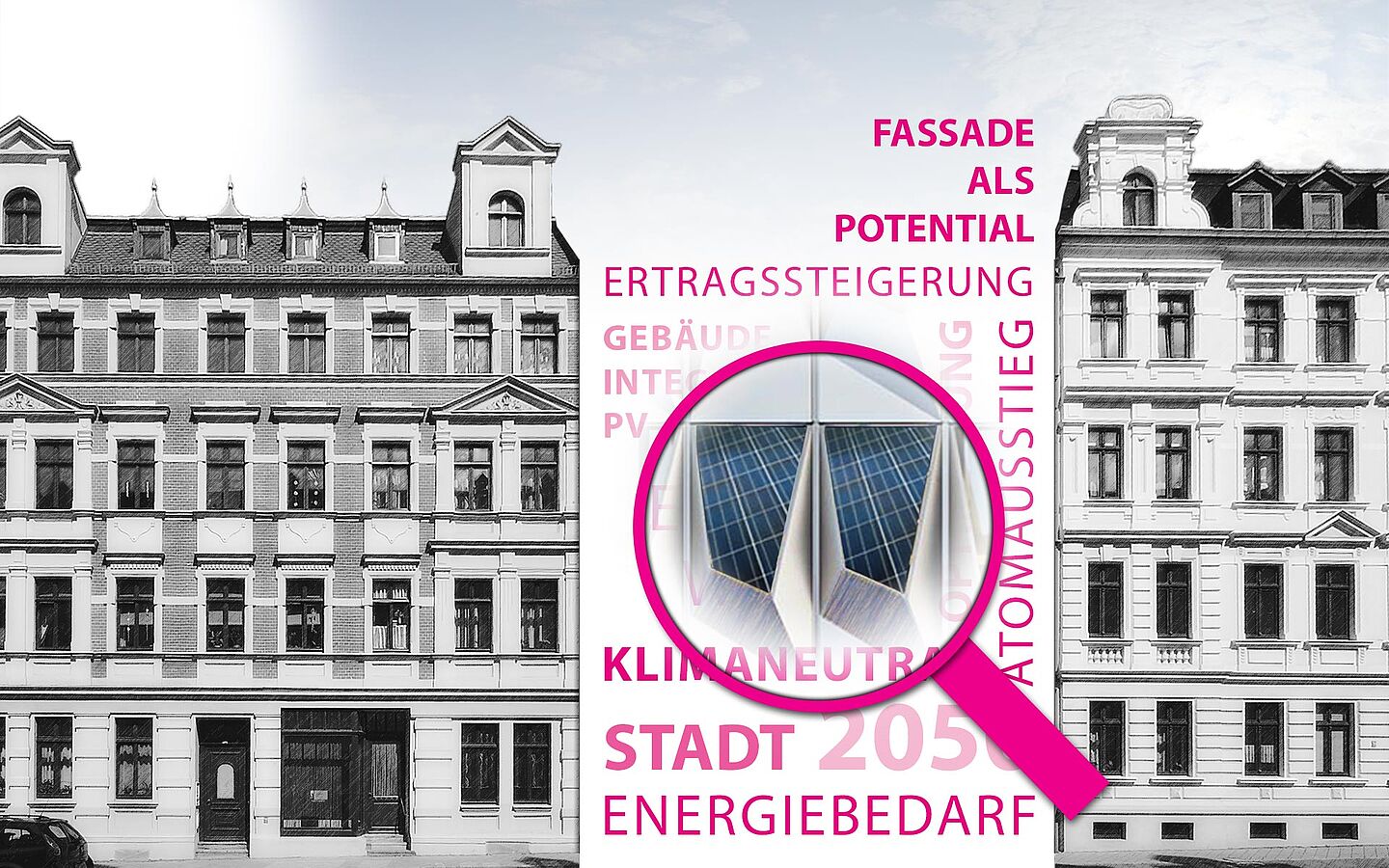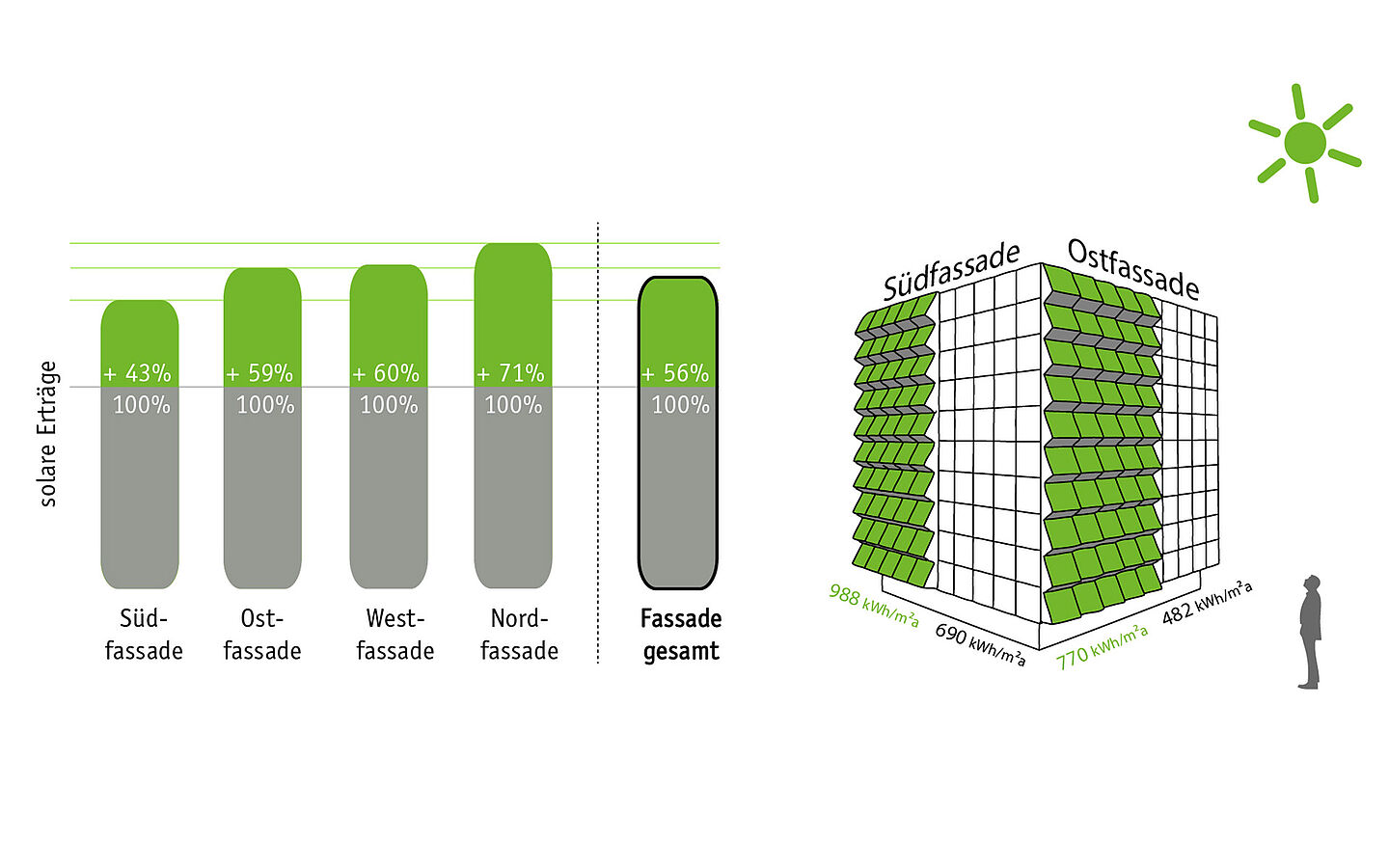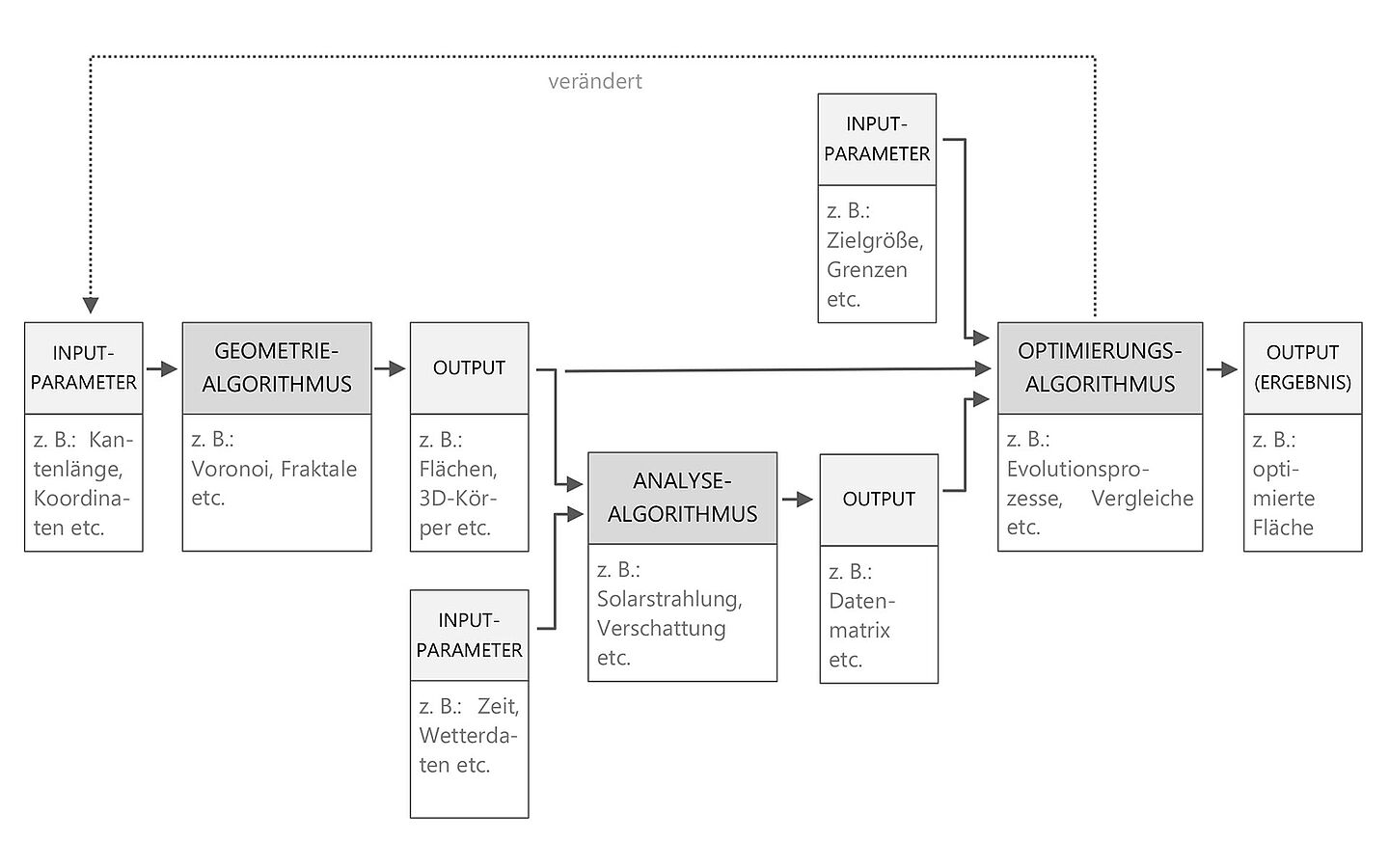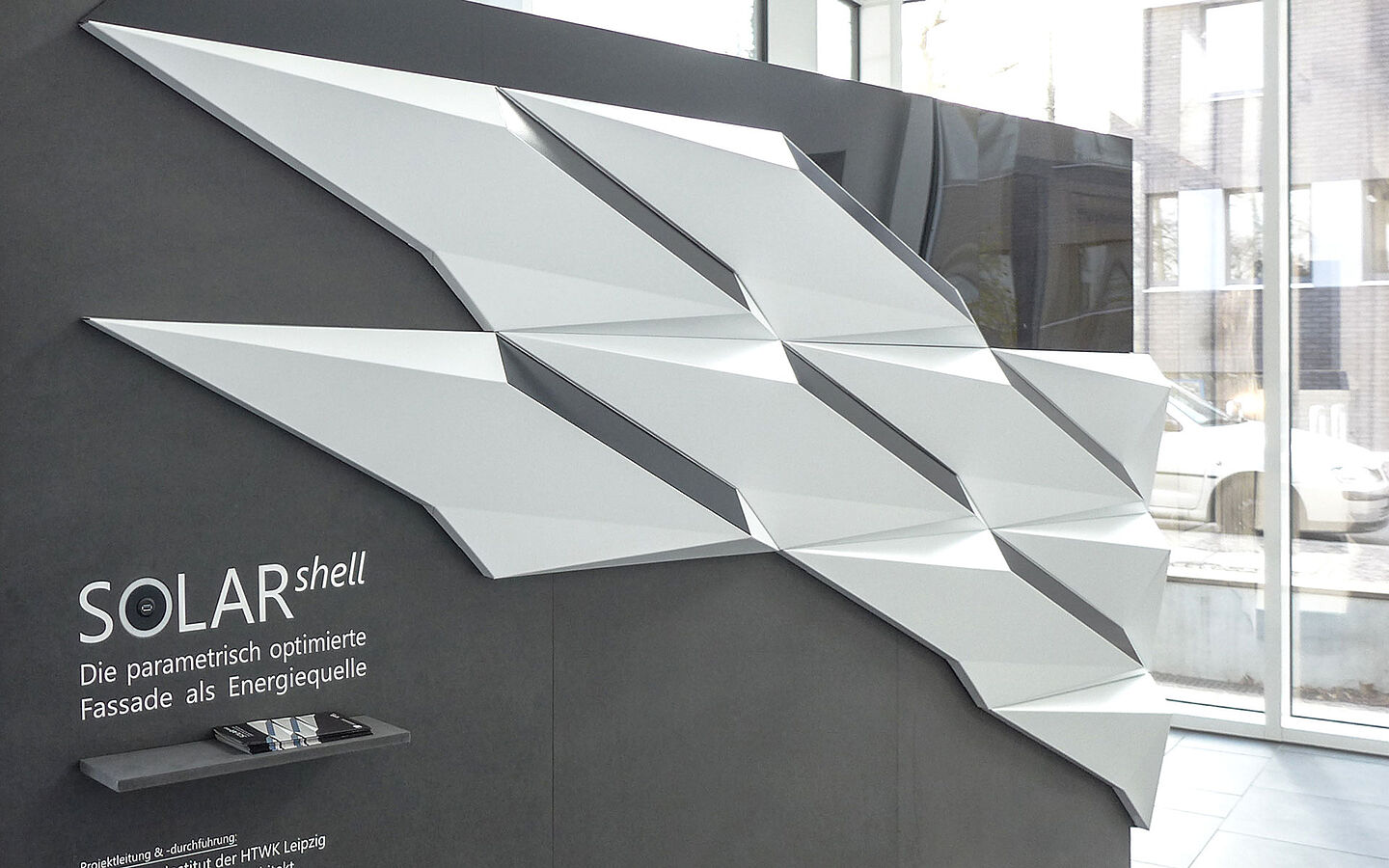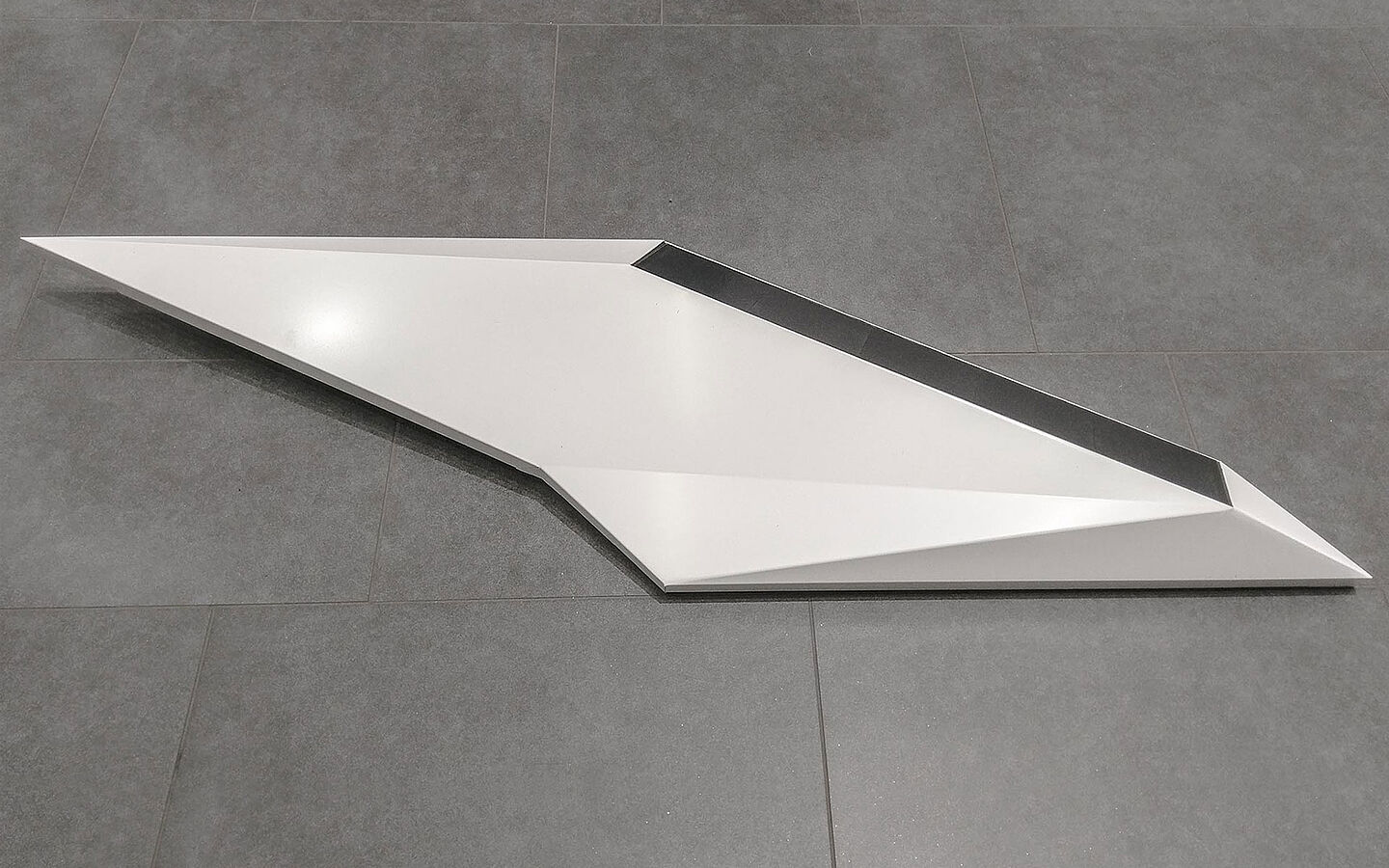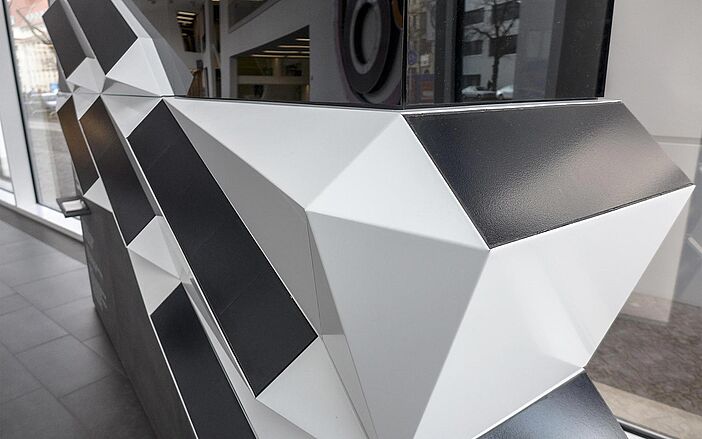To meet future requirements of nearly zero-energy buildings, renewable energy sources in close proximity to a building will be mandatory. Using well-oriented roofs for photovoltaics (PV) will not be sufficient, since these surfaces are also considered for other options, such as roof terraces or greening. Therefore PV-activated facades are an important future potential for achieving the climate goals. However, standard PV modules cannot respond to individual location and design requirements within a dense urban context at present.
SOLAR.shell on the other hand consists of small-scale PV modules that can be flexibly integrated into facades to scale. Depending on a facade’s orientation and shading, parametric-generative algorithms implemented in the design process rotate the PV modules towards the sun into an optimal angle. The yield per square meter PV area can be increased by up to 55 % compared to modules installed in a planar alignment. The solar optimization produces unique folding geometries with multifaceted haptic and visual appearances. This way, climate-neutral buildings can be comprehensively integrated into the cityscape with both creative and technical sophistication.
